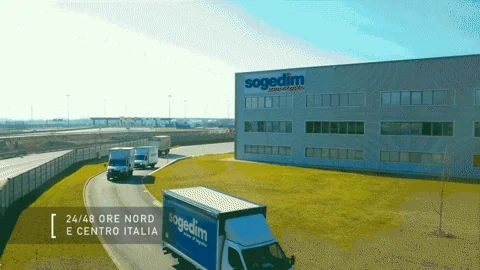Introduction
European Intermodal Transport is becoming a cornerstone of modern logistics, combining various modes of transportation to create a more efficient and sustainable supply chain. This approach leverages the strengths of different transport modes, optimizing logistics operations and reducing environmental impact.
What is European Intermodal Transport?
European Intermodal Transport refers to the use of multiple modes of transportation, such as rail, road, and sea, to move goods from origin to destination. This method ensures that each mode is used where it is most efficient, reducing costs and improving overall logistics performance.
Distribution of Transport Modes in European Intermodal Transport
The pie chart below illustrates the distribution of various transport modes used in European Intermodal Transport. It highlights the percentage share of each mode—rail, road, sea, and air—in the intermodal logistics landscape. This visual representation is based on data from reliable sources, providing insights into the current trends and usage of different transport methods within Europe.
Benefits
Efficiency
European Intermodal Transport enhances efficiency by optimizing the use of different transport modes. Rail is used for long hauls, reducing fuel consumption and road congestion, while trucks handle the first and last miles of the journey.
Sustainability
A key advantage of European Intermodal Transport is its contribution to sustainability. By reducing reliance on road transport, it lowers greenhouse gas emissions and decreases traffic congestion. Rail and sea transport are more fuel-efficient and environmentally friendly options.
Cost-Effectiveness
European Intermodal Transport can also be more cost-effective. Using rail and sea for the bulk of the journey can lower fuel and labor costs, while minimizing wear and tear on road infrastructure.

Challenges in European Intermodal Transport
Infrastructure Issues
One of the main challenges in European Intermodal Transport is the disparity in infrastructure quality across different countries. Some regions have well-developed rail and port facilities, while others lag behind, creating bottlenecks in the supply chain.
Regulatory Hurdles
Different countries have varying regulations regarding transport modes, which can complicate the seamless integration of intermodal transport. Harmonizing these regulations is essential for the efficient movement of goods.
Coordination Between Transport Modes
Effective coordination between different transport modes is crucial for the success of European Intermodal Transport. This requires advanced logistics management systems and real-time communication between all parties involved.

Future Trends in European Intermodal Transport
Technological Advancements
The future of European Intermodal Transport will be shaped by technological advancements. Innovations like autonomous vehicles, advanced tracking systems, and blockchain technology can enhance the efficiency and transparency of intermodal logistics.
Policy Developments
Policy developments at the EU level are expected to support the growth of European Intermodal Transport. Initiatives aimed at improving infrastructure, harmonizing regulations, and promoting sustainable transport will play a crucial role.
Increased Focus on Environmental Impact
As the importance of sustainability grows, there will be an increased focus on reducing the environmental impact of logistics. European Intermodal Transport, with its potential to lower emissions and improve efficiency, will be a key part of this effort.

Exploring European Transport
European Intermodal Transport encompasses a wide range of services designed to streamline logistics operations across the continent. To gain a deeper understanding of these services, check out A Comprehensive Guide to Transportation Services in the EU. This guide covers everything from freight forwarding to specialized transport solutions, ensuring you have all the information needed to optimize your logistics strategy.

Our Commitment to Sustainable Transport
At Europe Transport, we are dedicated to advancing sustainable and efficient logistics solutions. Learn more about our mission and values by visiting our About Us page. Discover how our commitment to European Intermodal Transport is driving innovation and sustainability in the logistics industry, and how we are helping businesses reduce their environmental footprint while improving operational efficiency.
Specialized Vehicle Recovery and Transportation Service
One of the key components of European Intermodal Transport is the ability to handle specialized transportation needs. Our Vehicle Recovery and Transportation Service is designed to provide efficient and reliable solutions for vehicle transport across Europe. Whether you need to move a fleet of vehicles or require emergency recovery services, we have the expertise and equipment to ensure your vehicles are transported safely and efficiently.

Comprehensive Transportation Services
For a broad overview of the transportation services we offer, visit our Transportation Services page. From intermodal transport solutions to warehousing and distribution, we provide a full spectrum of logistics services to meet your needs. Our expertise in European Intermodal Transport ensures that your goods are moved seamlessly across different transport modes, optimizing efficiency and reducing costs.
Conclusion
European Intermodal Transport is set to revolutionize the logistics industry by offering a more efficient and sustainable way to move goods. By addressing challenges and leveraging future trends, stakeholders can maximize the benefits of this innovative approach. Embracing European Intermodal Transport will be essential for businesses looking to improve their logistics operations and reduce their environmental footprint.
Note: we have relied on data from the following two sources:
